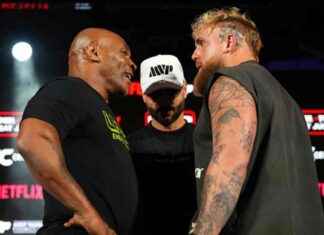CHARLESTON, S.C. >> The bullet holes in the fellowship hall at Emanuel AME church have been patched, but the holes in the fabric of life in Charleston remain.
Sharonda Coleman-Singleton is absent from Goose Creek High School, her exhortations still ringing in the ears of girls who ran track for her. At the library, there’s no one to give just the right guidance, to find the right book, as Cynthia Hurd did. The strong voice of Emanuel’s pastor-legislator, Clementa Pinckney, does not resound, here or at the capitol in Columbia.
Dylann Roof, killer of these worshippers and six others at one of the South’s first African-American churches, is headed to death row after an agonizing and therapeutic trial. But if justice has been served, the community has not moved on; the shots that rang out on June 17, 2015, still resonate.
They are amplified by the unfinished case of a white North Charleston police officer charged with murder in the death of a black driver. Efforts go on to build a museum to tell the stories of more than three centuries of African-American struggles, and to place this community’s recent suffering in context.
And at Emanuel, churchgoers still assemble for Bible study on most Wednesdays, vowing that love and faith will prevail.
••••••
The girls who ran track for Singleton called her Mom.
Sometimes, she wore sweatpants under her skirt to make it easier to get from her job as a speech therapist at the school to the track. She sat her chair in the middle of the track so she could keep an eye on everything. And she worried as much about grades and character as she did sprint times and long jump distances.
“She would take you in like you were her daughter, then she would teach you how to be a lady,” said senior Alexis Simmons.
Singleton’s death stung the close-knit team. “There were so many days at the end of practice I’m wiping away tears and holding girls on my shoulder because they think they have to do this for her and they forget they have to find themselves too,” said Doris Simmons, who was hired as an assistant coach after Singleton’s death (she is not related to Alexis Simmons).
The team had its best season ever just before Singleton was killed. They had even more athletes make the state meet the year after her death. And Goose Creek High has managed to make one of Singleton’s dreams come true — the school will host a track tournament next month in Singleton’s honor.
“She loved on them, and it is good to see it pour back out,” Doris Simmons said. “We all know this could have went the opposite way. You would have a couple of girls rebelling because of the pain, and you just see these girls just wrap their arms around them.”
••••••
After 27 years working with the library system in her home county, leaders promoted self-professed book nerd Cynthia Hurd to one of their most important branches, the cozy building now named the Cynthia Graham Hurd/St. Andrew’s Regional Library.
Graham’s brother Malcolm said she may have become a librarian for her love of books, but over time, her love for people blossomed too.
So many people sought Cynthia Hurd out by name at the library. She would help with a resume, give advice on where in the community to turn for help, or just listen, said Charles Greene, who had been coming to the library much of his life.
“She was a servant, a true servant, to everyone and to the Lord,” Greene said. “When you lose someone like that — it’s never going to be replaced.”
Hurd’s family is sustaining her life’s work. At Roof’s death penalty trial, brother Melvin Hurd rattled off a dozen things named in his sister’s honor — along with the library named for her, there are Cynthia Graham Hurd scholarships at two universities.
“And that’s just what I could remember off the top of my head,” he said.
••••••
“Think about Dylann Roof,” said Michael Moore. “I don’t believe he could have done what he did if he knew about the humanity of the people in that room.”
Moore — the great-great grandson of Robert Smalls, a man who freed himself, a ship’s crew and their families from slavery by commandeering a ship from Confederates in 1862, and later served in Congress — believes that education can help fill the emptiness in the souls of people like Roof. He is president of the $75 million African-American history museum proposed for the site of the old wharf where nearly half of the slaves that entered the U.S. first stepped on American soil.
Former Mayor Joe Riley needs to raise $19 million quickly to reach his goal of starting two years of construction by the end of this year.
“This is one of the most sacred sites of African-American history in the western hemisphere,” Riley said of the wharf, just a short walk from the old slave market where artists sell the sweetgrass baskets native to the area. “There are stories of courage and determination and suffering. These are American stories that Americans do not know.”
Riley has been working on the museum since 2000, but the shootings at Emanuel AME gave the work more urgency and revealed Riley’s fundraising ability. He spearheaded efforts that brought more than $3 million of donations to the church.
Moore said he wants the door to the museum to be very wide — big enough to acknowledge that African-American history is really just American history. Dylann Roof walked through Emanuel’s open door intent on murdering black people; someday, Moore hopes, his museum’s door will help open hearts.
••••••
It’s been hard enough for the black community to come to terms with the murders at Emanuel. The unresolved case of a white police officer charged in the shooting death of an unarmed black man during a traffic stop makes it even harder.
The killing of Walter Scott happened in North Charleston — an 8-mile drive from Emanuel AME. And former officer Michael Slager’s trial happened a month before Roof’s trial started, with a jury unable to reach a verdict in the murder trial of the officer.
“There’s great unease. It’s unfinished business. Communities, black and otherwise, are still walking on eggshells, talking about these things,” said Mount Zion AME pastor Kylon Middleton.
Walter Scott’s death was videotaped by a bystander and played over and over — the 50-year-old man in the green shirt running slowly away from an officer firing eight times at his back.
“Burger King” has become a code word for the anger in the black community. Detectives bought Roof lunch at the fast food chain after he was arrested without violence.
A young black man who shot white people and had the gun sitting in the back seat would have never been given food and likely wouldn’t have made it out of his car alive no matter what effort he made to surrender peacefully, said the Rev. Nelson Rivers, a Charleston pastor and vice president of the National Action Network.
“Even in the case of a terrorist, white privilege played a role,” Rivers said. “Dylann Roof confessed. And we now know that video isn’t enough to get a conviction — at least when it is a white officer and a black man.”
••••••
And yet, there has been progress.
The most obvious legacy of the Emanuel AME shootings came in South Carolina’s capital, where after 50 years the Confederate flag was removed from Statehouse grounds.
Roof, a self-taught white supremacist, took pictures with the familiar flag. And after years of ignoring calls to bring it down — including from Pinckney himself — the killings shook many Republicans enough to remove the rebel banner less than a month after the massacre.
It was, said President Barack Obama, “a modest but meaningful balm for so many unhealed wounds.” Republican Gov. Nikki Haley was supportive; she went to the funerals of all nine victims, then kept their programs on her nightstand so she wouldn’t forget.
But was this enough? Pinckney’s seatmate in the South Carolina Senate, Sen. Vincent Sheheen, does not think so.
Sheheen recalls a colleague who became a pastor at 18 and was voted into the Statehouse at 23, a man who often called for health care and a living wage for all, and for better education in poor, rural areas. He was often ignored in conservative South Carolina, but he never stopped speaking out.
That unique voice is missing now — the voice of “a man of the church who actually lived by its tenets,” said Sheheen, a Camden Democrat who could sit in his chair during the Confederate flag debate and touch the black shroud on Pinckney’s desk.
He wonders if his Senate colleagues learned from the shooting that the right thing to do is the right thing to do — before it turns into a tragedy.
“It reflects badly on the leadership of the state and the people of the state that it took nine people being massacred to do the right thing,” Sheheen said. “I would rather remember Clem for the positive, humane positions he took.”
Associated Press writer Meg Kinnard contributed to this report.
Our editors found this article on this site using Google and regenerated it for our readers.







